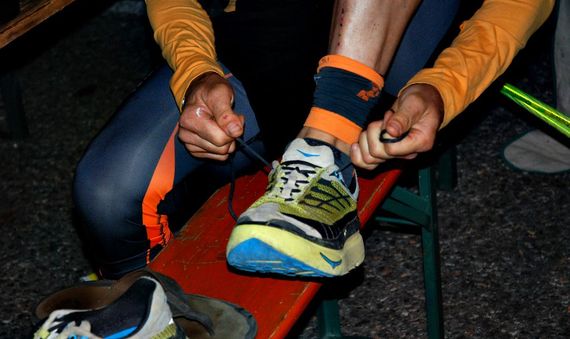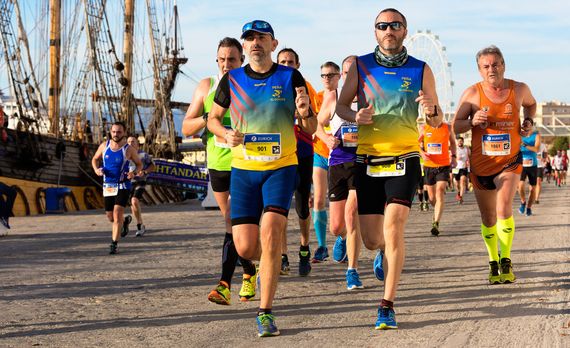In light of the growing popularity of running, shoe manufacturers are constantly launching new technologies in search of a balance between cushioning, stability and propulsion. While they promise to ensure more comfortable experiences and better performance, various studies have shown that the risk of injury and discomfort among runners remains high. Why can’t innovative new shoes reduce these problems?
Going for a run can be beneficial for your health, but the data also suggest that problems such as sprains, strains or overloading —and other discomforts in the feet, legs and back— are common among those who choose this trendy sport. At least one in three runners suffer from injuries each year, according to an article reviewing the scientific literature on the subject.
In addition, the journal Scientific Reports from Nature Research recently published a study that posed an additional problem: decades of manufacturers’ efforts to reduce the impact of runners’ strides have had little effect and may even be counterproductive. To understand this “cushioning paradox,” the authors compared how two types of running shoe —one with normal cushioning and another with “maximalist” cushioning (43 millimetres of sole thickness at the heel and 37mm at the front)— felt to a study group of 12 healthy males, aged 22 to 32.

The participants were videotaped while running at two different speeds (10 and 15 kilometres per hour) and in both cases it was recorded that the impact force of the feet on the ground was greater when wearing the maximalist shoes than when wearing the normal ones. The conclusions of the study, carried out by researchers at the University of Helsinki, suggest that those with greater cushioning altered the normal functioning of the legs when running and therefore generated more impact rather than limiting it.
Greater rigidity and impact
The principal researcher of the article, Juha-Pekka Kulmala, explains it with biomechanical arguments. When we run our legs act like springs that compress when our feet hit the ground and are released when the feet lift off. Shoes with maximum cushioning already take on so much of that task of compression that the legs don’t need to be compressed as much and bend less in the knees and the ankles, as observed in the analysis of the videos of the runners studied. And according to his hypothesis, this additional rigidity of the legs and the greater impact on the ground could increase the risk of injury.
Does this mean that we shouldn’t opt for cushioned shoes? José Víctor Alfaro, a podiatrist with the Royal Spanish Athletics Federation (RFEA) and Real Madrid CF, as well as co-founder of a network of specialised clinics, starts from one premise: “After treating almost 400,000 patients, we still haven’t found two identical feet, nor two equal runners,” explains Alfaro to OpenMind.
In his opinion, you cannot draw general conclusions. “It has nothing to do with one foot having a lot of arch or elasticity or another being very flattened or rigid,” he says. “The recipe is that there is no recipe.” In the same way, Alfaro believes that a technology cannot be assumed as being either good or bad on its own. “All the technology that is presented to us has a real part to play, with significant research and technical development work behind it,” he says. “But what can help one runner can cause injury to another.”

If you follow this idea, the results of the studies should also be taken with a grain of salt. “You can find articles that basically endorse one option and also the opposite. It will depend a lot on the study group,” says the podiatrist. In fact, the cited article invites other researchers to confirm its conclusions.
New materials for sports innovation
The sole has become the workhorse of sports shoes manufacturers in their commitment to innovation. They used to simply sell shoes with “rubber soles.” Today the soles of running shoes can be made of materials ranging from synthetic rubber, thermoplastic polyurethane, EVA polymer or intelligent corrugated foams to recycled sugar cane. And to obtain good breathability and support, the upper part of this footwear is made up of increasingly sophisticated fabrics and fibres.
“The most important advances are taking place in the sole,” explains Alfaro. “It is the area that has the greatest impact, because it is the part that strikes the ground and returns the energy.” The goal of Nike is to improve the return of energy, while Mizuno is committed to finding balance between cushioning and stability and Asics is more focused on combining lightness and reactivity. All these approaches can have their point of interest for a certain category of runner, but none is definitive. “As they have a very specific objective, these soles should be specified for specific runners,” concludes this specialist in sports podiatry.
Comments on this publication